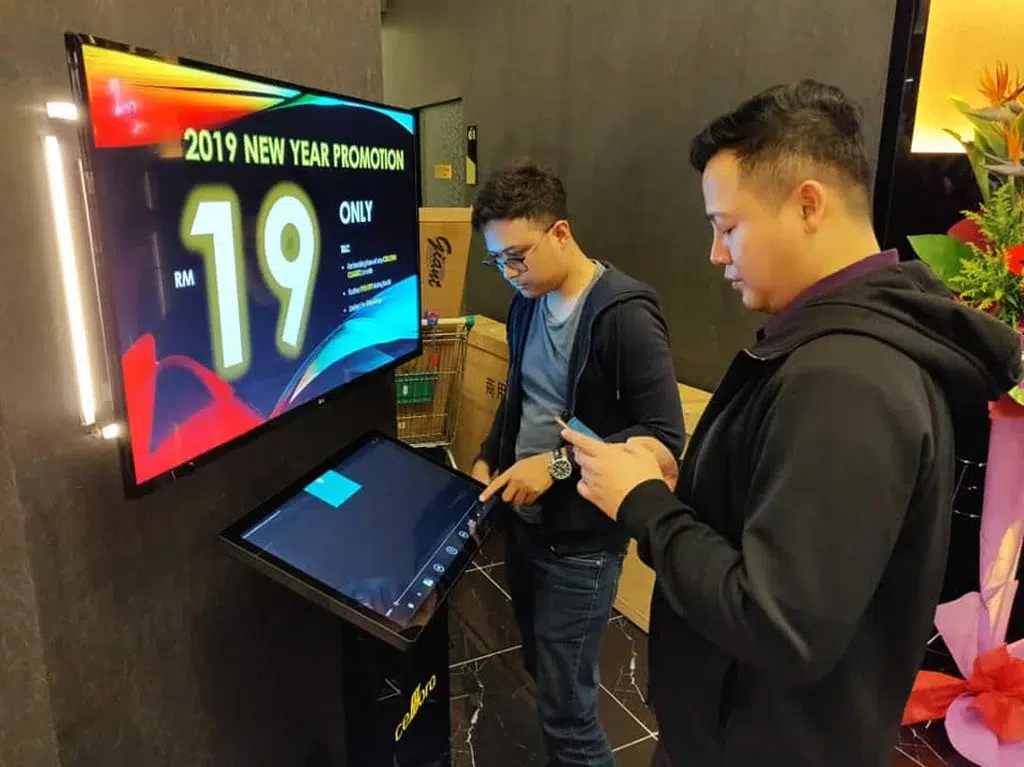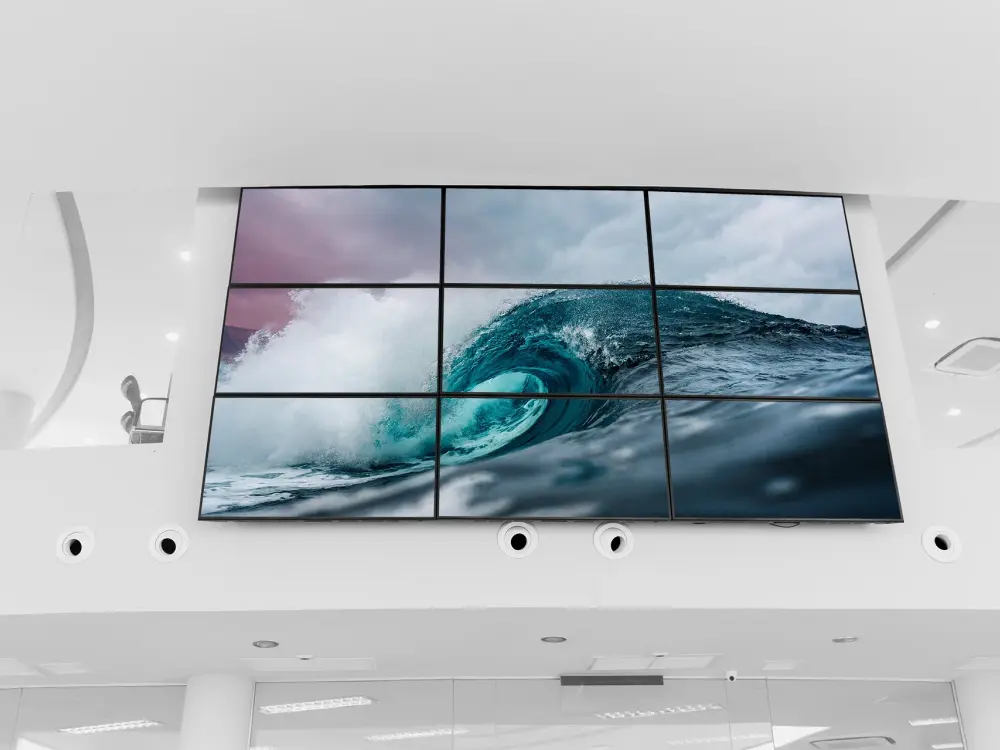
Discover the power of interactive touchscreen kiosks for data collection and surveys. Explore how businesses can leverage these innovative tools to gather valuable insights, engage customers, and make data-driven decisions.
Introduction
In today’s data-driven world, businesses understand the importance of gathering valuable insights to make informed decisions and enhance customer experiences. Interactive touchscreen kiosks have emerged as a game-changing technology, enabling businesses to collect data and conduct surveys in a convenient and engaging manner. This article delves into the realm of interactive touchscreen kiosks, exploring their immense potential for data collection and surveys, and how businesses can effectively leverage these innovative tools to drive growth and success.
The Power of Interactive Touchscreen Kiosks
Understanding Interactive Touchscreen Kiosks
Interactive touchscreen kiosks are self-service devices that incorporate touch-sensitive screens, allowing users to interact with digital content and access information or services. These kiosks are typically placed in high-traffic areas such as retail stores, airports, malls, museums, and event venues, providing users with a convenient and intuitive way to navigate and engage with various offerings.
Benefits of Data Collection and Surveys
- Gathering Customer Insights: Interactive touchscreen kiosks offer businesses a unique opportunity to collect valuable data directly from customers. By designing user-friendly surveys or questionnaires, businesses can gather insights into customer preferences, opinions, and behaviors. This data can be used to inform product development, marketing strategies, and overall business decision-making.
- Enhancing Customer Engagement: Interactive touchscreen kiosks provide an engaging platform for customers to actively participate in surveys or provide feedback. The interactive nature of these kiosks captures attention and encourages users to share their thoughts, resulting in higher response rates and more comprehensive data.
- Real-Time Feedback: Interactive touchscreen kiosks enable businesses to receive feedback and data in real-time. This immediate access to information allows businesses to quickly identify trends, address customer concerns, and make timely adjustments to their offerings or operations.
- Personalization and Targeting: With interactive touchscreen kiosks, businesses can tailor surveys and data collection processes based on user demographics, preferences, or specific locations. This personalization creates a more relevant and customized experience, increasing the likelihood of obtaining accurate and actionable data.
- Cost and Time Efficiency: Compared to traditional methods of data collection and surveys, interactive touchscreen kiosks offer cost and time efficiency. These kiosks can handle large volumes of interactions simultaneously, reducing the need for manual data entry and streamlining the data collection process.
Effective Strategies for Utilizing Interactive Touchscreen Kiosks

Designing Engaging Surveys
To maximize the effectiveness of interactive touchscreen kiosks for data collection and surveys, businesses should consider the following strategies:
- Clear and Concise Questions: Design surveys with clear and concise questions to ensure users understand and can easily respond to them.
- Visual Appeal: Utilize visually appealing graphics, icons, and images to enhance the overall design of the survey and capture users’ attention.
- Interactive Elements: Incorporate interactive elements, such as sliders, rating scales, or touch-based gestures, to create an engaging user experience.
- Incentives: Consider providing incentives or rewards for users who complete the survey to encourage participation and increase response rates.
Optimizing Data Collection and Analysis
To make the most of the data collected through interactive touchscreen kiosks, businesses should focus on the following aspects:
- Data Security: Implement robust security measures to protect customer data collected through the kiosks and ensure compliance with privacy regulations.
- Analytics and Insights: Utilize data analytics tools to extract meaningful insights from the collected data and identify patterns, trends, and customer preferences.
- Integration with CRM Systems: Integrate the data collected through interactive touchscreen kiosks with customer relationship management (CRM) systems to enhance customer profiles and enable personalized interactions.
- Continuous Improvement: Continually analyze and refine data collection processes to improve the quality and relevance of the collected data.
Conclusion
In conclusion, the utilization of interactive touchscreen kiosks for data collection and surveys presents a multitude of benefits and opportunities for businesses across various industries. By incorporating these innovative devices into their operations, businesses can not only gather valuable insights but also enhance customer engagement and drive growth.
One of the key advantages of interactive touchscreen kiosks is their ability to provide businesses with direct access to valuable customer data. Through the design of user-friendly surveys and questionnaires, businesses can gain deep insights into customer preferences, opinions, and behaviors. This data serves as a valuable resource for informing product development, marketing strategies, and overall business decision-making. By understanding their customers at a deeper level, businesses can tailor their offerings to meet their needs and expectations, ultimately leading to improved customer satisfaction and loyalty.
Moreover, interactive touchscreen kiosks offer an engaging platform for customers to actively participate in surveys and provide feedback. The interactive nature of these devices captures attention and encourages users to share their thoughts, resulting in higher response rates and more comprehensive data. Real-time feedback further enhances the value of interactive touchscreen kiosks, as businesses can swiftly identify trends, address customer concerns, and make timely adjustments to their products or services. This agility and responsiveness enable businesses to stay ahead of the competition and adapt to changing market dynamics.
Personalization and targeting are additional benefits that interactive touchscreen kiosks offer. By tailoring surveys and data collection processes based on user demographics, preferences, or specific locations, businesses can create a more relevant and customized experience for their customers. This personalization fosters a stronger connection between the business and the customer, increasing the likelihood of obtaining accurate and actionable data.
Furthermore, interactive touchscreen kiosks offer cost and time efficiency compared to traditional methods of data collection and surveys. These devices can handle large volumes of interactions simultaneously, reducing the need for manual data entry and streamlining the data collection process. This efficiency not only saves valuable time and resources for businesses but also allows them to collect and analyze data on a larger scale, leading to more comprehensive insights and a better understanding of their target audience.
To maximize the effectiveness of interactive touchscreen kiosks, businesses should focus on designing engaging surveys that are clear, visually appealing, and interactive. They should also optimize data collection and analysis processes, ensuring data security, utilizing data analytics tools, and integrating the collected data with CRM systems for enhanced customer profiles and personalized interactions. Continuous improvement is key, as businesses should regularly analyze and refine their data collection processes to ensure the quality and relevance of the data they obtain.
In summary, interactive touchscreen kiosks have revolutionized the way businesses collect data and conduct surveys. Their ability to gather valuable insights, enhance customer engagement, and drive data-driven decision-making makes them a valuable asset for businesses seeking growth and success. By embracing the potential of interactive touchscreen kiosks and implementing effective strategies, businesses can gain a competitive advantage, improve their understanding of their target audience, and deliver exceptional customer experiences.



